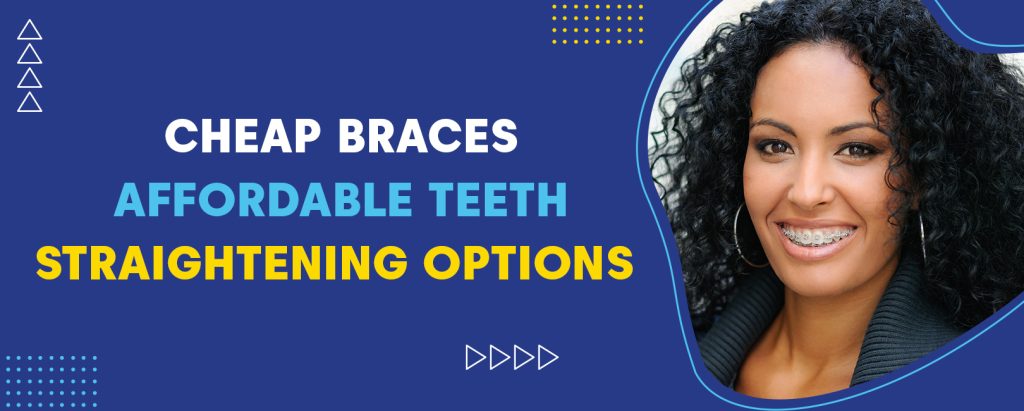

Affordable orthodontic care is a significant challenge for many individuals, but it’s not an insurmountable obstacle. This comprehensive guide explores the various avenues available for straightening teeth without straining your budget. Orthodontic treatment, while often perceived as a significant investment, can be made more accessible with careful planning, proactive research, and the right approach. This article will delve into the difficulties associated with the high costs of orthodontics and provide practical solutions to obtain affordable orthodontic care. We will explore various strategies to tackle this issue, from leveraging available financing options to choosing the most suitable treatment types, ultimately providing readers with a roadmap to achieve a beautiful, healthy smile without depleting their savings. This article will also touch on the different types of treatments available and why some might be more budget-friendly than others. We will also highlight the importance of researching providers and their associated fees. This comprehensive guide covers the key steps required to overcome the financial challenges associated with orthodontics and will detail the process of achieving optimal dental health within budgetary constraints. By the end of this article, you will have a clear understanding of the options available and how to choose the right path for your needs.
Understanding the High Costs of Orthodontic Treatment
The Price of Straight Teeth
The allure of a straighter smile is undeniable, yet the cost of orthodontic treatment can often seem prohibitive. Many individuals are put off by the significant upfront expenses associated with braces, clear aligners, or other orthodontic procedures. This is particularly true for those with limited budgets. While achieving a healthy and aesthetically pleasing smile is a goal worth pursuing, the financial burden can feel insurmountable. The price tag often includes not only the initial cost of the treatment but also potential follow-up appointments and adjustments over time. Additionally, the cost can vary greatly depending on the complexity of the treatment, the chosen provider, and the specific materials used. This inherent variability can make it difficult for patients to compare costs and make informed decisions. Understanding the factors driving these costs is crucial for finding affordable solutions.
Factors Influencing Costs
Several factors can influence the final cost of orthodontic care, making it challenging to obtain a precise estimate beforehand. The severity of the malocclusion (misalignment of teeth) greatly impacts the time and resources required for treatment. Complex cases demanding extensive treatment periods naturally translate to higher overall costs. The materials selected for the appliances play a significant role. For example, metal braces are generally less expensive than ceramic or clear aligners. The experience level and reputation of the orthodontist can also affect pricing. Recognizing these factors can empower patients to make informed choices about their treatment options and find solutions tailored to their individual circumstances.
Exploring Financing Options for Orthodontic Treatment
Orthodontic Financing Plans
A wide array of financing options is available to help patients manage the cost of orthodontic care. Many dental practices and orthodontic offices offer in-house payment plans allowing patients to spread out their payments over time. Interest-free financing programs are frequently available through third-party financial institutions designed to assist individuals in obtaining essential healthcare treatments like orthodontics. These programs usually come with a set of eligibility criteria that patients must meet. They frequently require a credit check or a specific level of income to qualify. Understanding the terms and conditions associated with each financing option is critical. Researching and comparing various options is essential to finding the best fit for your specific financial situation.
Leveraging Insurance Benefits
Many insurance plans cover a portion of orthodontic treatment costs. This is often a significant way to reduce expenses, and understanding the specifics of your dental insurance plan is of paramount importance. The coverage can vary greatly based on the type of plan. Investigating whether your insurance provider offers orthodontic benefits or even a separate dental plan with orthodontic coverage is crucial before initiating treatment. Carefully reviewing your policy documents is crucial to grasp the specific details concerning coverage amounts, maximum benefits, and any required co-pays or deductibles. This will provide a clear understanding of the financial assistance you can expect.
Evaluating Different Orthodontic Treatment Options
Choosing the Right Type of Braces
The choice of orthodontic treatment profoundly influences the cost. Traditional metal braces are often the most cost-effective option, while clear aligners or ceramic braces can often command a higher price tag. The level of complexity in the required treatment will also affect the overall cost. Factors such as the number of appointments, the complexity of the treatment, and the materials used often correlate to the price. Patients should weigh the long-term benefits of each treatment type against the initial cost to select a choice that aligns with their budget and preferences. Consider the level of comfort and the potential impact on your daily lifestyle when choosing an orthodontic treatment.
Finding Affordable Orthodontic Providers
Comparing Orthodontist Fees
Comparing the fees of various orthodontic providers is a vital step toward cost-effectiveness. Researching different providers, including orthodontists in your network or those in surrounding areas, allows you to gather comprehensive information on treatment costs. Visiting a few different offices allows you to compare costs and assess their services to make a decision that’s tailored to your financial realities. This comparative approach provides greater insight into pricing structures and associated costs. Understanding the fees charged by different clinics is also crucial in selecting the most suitable option.
Identifying Low-Cost Orthodontic Options
Investigating the possibility of partnering with a dental school or public health clinic might open up additional low-cost options. Dental students often participate in supervised treatment plans under the guidance of experienced professionals. While the quality of care at these facilities is often high, the cost-effectiveness can be significant. These low-cost options are available to many individuals, and by taking advantage of them, a budget-conscious individual can potentially make their orthodontic treatment more accessible.
Strategies for Maximizing Affordability
Budgeting for Orthodontic Treatment
Developing a comprehensive budget that includes the anticipated costs of orthodontic treatment is a crucial step to avoid financial surprises. This step allows for a better understanding of the financial implications associated with orthodontic care. Breaking down the total cost into smaller, manageable monthly payments can make the process more manageable. Tracking the total cost of treatment, associated procedures, and ancillary expenses, such as retainers and adjustments, is essential. Creating a detailed budget, factoring in the projected costs of various treatment options, and considering different financing alternatives can greatly alleviate financial stress and allow for better planning.
Considering the Long-Term Value of a Healthy Smile
The long-term value of a straighter smile often outweighs the short-term cost implications. Improved oral health, enhanced confidence, and potentially improved speech are some of the long-term benefits. The value of investing in orthodontic treatment extends beyond the aesthetic improvements, encompassing better chewing efficiency, reduced risk of gum disease, and maintaining a healthy jaw alignment. The long-term positive impact on oral health, confidence, and overall well-being provides a compelling case for prioritizing orthodontic care, even with budget constraints.
Frequently Asked Questions
What are the most common financing options for affordable orthodontic care?
Many options are available for financing orthodontic treatments, including in-house payment plans and third-party financing programs. These plans typically allow patients to pay their orthodontic expenses over a set period, frequently at a manageable interest rate or without interest. Additionally, insurance coverage or employer-sponsored health benefits can significantly reduce out-of-pocket costs. Individuals should carefully evaluate the terms and conditions of each option to determine the best fit for their circumstances.
What are some affordable orthodontic treatment options beyond traditional braces?
Several alternatives to traditional metal braces exist, including clear aligners and ceramic braces. While these options may have slightly higher upfront costs, their aesthetic appeal and potential convenience might make them more attractive to some individuals. Often, these options translate to a customized approach to straightening teeth. Patients should consult with an orthodontist to determine the best treatment option based on their specific needs and financial situation.
In conclusion, achieving affordable orthodontic care is achievable with careful planning and research. Understanding the various financing options, exploring different treatment types, and considering the long-term benefits of a healthy smile are crucial steps towards achieving a straighter smile without breaking the bank. By exploring these options and seeking guidance from qualified professionals, individuals can navigate the challenges of affordable orthodontics and embark on a journey towards a confident and healthy smile.